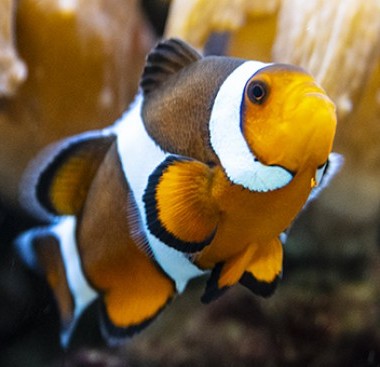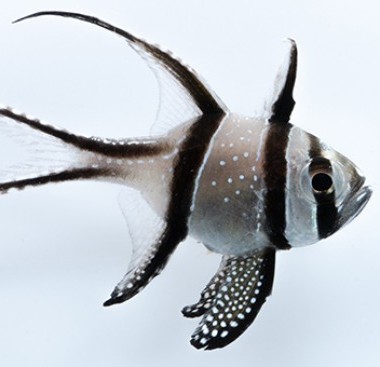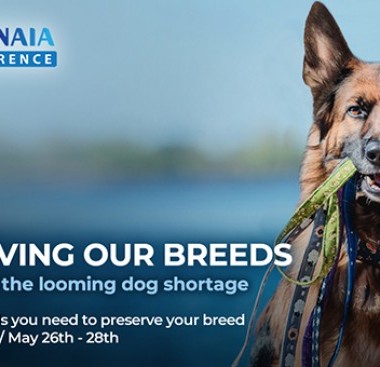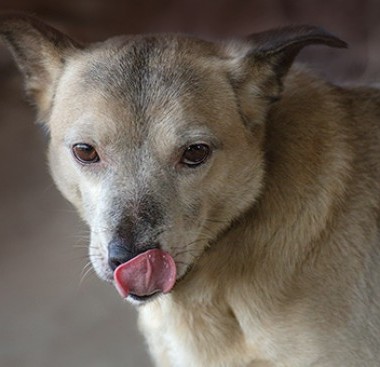Deadline Looms: Send Your Comments to USDA APHIS!
Need help writing your APHIS comments? Let us assist you!
By: Patti Strand Date: 07/2/2012 Category: | Animal Legislation | Canine Issues |
Don't be intimidated by the complexity of the proposed rule or by the many different recommendations and points of view on the Internet. You don't need to be a lawyer or a policy expert in order to provide effective comments to USDA APHIS. You only need to understand the basics of how the proposed rule changes existing law and how those changes will affect you, and to make your comments before the deadline, which has been extended to August 15, 2012.
Please note that despite its possible application to other regulated species, the following guidance, which is meant to be informative and practical rather than comprehensive, has been created specifically for the dog interests that are affected by the proposed rule.
- Current Regulations
- Background Leading to Proposed Rule Change
- What the Proposed Rule is Supposed to Do
- Why the Proposed Rule Will not Achieve Its Stated Goal
- Important Considerations
- Writing Your USDA APHIS Comments
- Skip All the Background and Go Straight to the USDA Comment Portal
Current Regulations
The Animal Welfare Act (AWA) currently regulates only the wholesale segment of the dog breeding and selling marketplace. That’s because 40 years ago when the licensing regulations were first drafted, most commercial breeders sold their dogs through middlemen who distributed them to pet stores where they were ultimately sold to the pet-buying public. The licensing was designed to provide oversight and protection to dogs bred in large commercial kennels operating away from the consumer’s view.
Under the existing regulations all breeders selling directly to consumers are exempted from the regulations as retail pet stores. Thus, whether a person is a hobby breeder engaged in preserving and improving breeds, a casual breeder selling puppies produced by family pets, a commercial breeder selling dogs as a business, or an actual brick and mortar pet store, they are all exempt today as retail pet stores.
Background Leading to Proposed Rule Change
The growth of the Internet has allowed some large scale commercial breeders to sell their dogs directly to consumers in lieu of wholesaling their stock to retail stores. Because they are selling directly to the consumer, this practice has also eliminated their requirement to be regulated by USDA. Some of these large scale commercial breeders sell all or virtually all of their dogs over the Internet without providing consumers access to their facilities or the opportunity to see their puppy prior to purchase. The proposal contends that operating this way thwarts the intent of the AWA to provide oversight and protection to dogs bred in large commercial kennels operating away from the consumer’s view, and it is this flaw that gave rise to the proposed rule.
What the Proposed Rule Is Supposed to Do
To solve this shortcoming, the USDA APHIS has proposed a rule that redefines retail pet stores in ways that treat all breeders with more than 4 breeding females as commercial operators that need to be regulated regardless of the number of litters they actually produce and sell unless all buyers visit the facilities and see their puppy before finalizing the purchase. It also mandates a license for breeders with fewer than five breeding females if they sell any animals that were not bred and raised on their premises. Importantly, the term breeding female is not defined in the regulation. This omission leaves the definition open to the interpretation of the agency, which at this point indicates that a breeding female is one that is capable of having puppies, not one that has actually had puppies during the period in question.
As with all proposed rules, the federal agency of origin is seeking public comments to enable them to draft a final rule that will be effective in achieving its goal and not lead to harmful unintended consequences.
Why the Current Proposal Will not Achieve Its Stated Goal
In the wholesale sector, which has been regulated from the beginning and which supplies the regulatory framework for the current proposal, virtually every breeder is commercial. They are in business and working to make a profit. A large majority of US breeders, however, do not and never have operated in the wholesale marketplace. These are the breeders who have always been exempted as retail pet stores. Unlike wholesale breeders, they are a very diverse group, and their mode of operation is shaped by different goals. While some are motivated by profit, many are motivated by a desire to preserve and improve a given breed; they do not function as businesses trying to make a profit, a fact underscored by IRS guidance and rulings regarding hobby breeders. Depending on their goal, retail breeders of different types keep vastly different numbers of dogs, and they keep them in different kinds of facilities depending on the number kept. They do not breed their dogs with the same frequency or use the same methods to advertise or sell them.
The bottom line is this: Unlike wholesale breeders, retail breeders are not a homogenous group and regulations that attempt to treat them as a uniform group are doomed to failure.
Complicating matters further, not only are retail breeders far more diverse than wholesale breeders, they are far more numerous. This is a huge factor that the USDA Regulatory Impact Analysis & Initial Regulatory Flexibility Analysis did not recognize when drafting their proposal. Information gathered from dog registries and from reviewing the assumptions, methods and sources used in the government analysis indicate that they have underestimated the number of new breeders that this proposal would regulate by a factor of at least 10. In other words, the 1500 new breeders they estimate will be affected by this rule is actually closer to 15,000 and perhaps much higher. This miscalculation is very serious because it misleads the agency into thinking it will have the resources necessary to enforce the proposed rule as it is currently drafted.
The proposed rule was prompted by an audit conducted by the agency’s Office of Inspector General (OIG) in the wholesale dog breeding sector. It concluded that some large scale commercial breeders were avoiding regulations by selling animals directly to consumers over the Internet and shipping them to buyers, sight unseen. The audit recommended “… that the Secretary seek legislative change to exclude Internet breeders from the definition of 'retail pet store,' and require that all applicable breeders or brokers who sell through the Internet be regulated under AWA.” In the context of the audit report, it is very clear that they were talking about large scale commercial operations, not relatively small in-home heritage breeding programs.
It is evident that USDA’s current draft proposal arises from problems found in the wholesale, commercial dog breeding environment and that it expands upon the current regulatory scheme designed for that sector. In doing so, it lumps together the small, low-risk retail breeders with large commercial operators, whether wholesale or retail, and defines them as Internet breeders if they sell even one dog sight unseen. Doing this will force USDA to expand its oversight to thousands of small, low-risk entities and use up the very resources needed to enforce the OIG’s recommendation to regulate large breeding businesses that currently avoid regulation by selling through remote means. It also undermines the stated intent of the proposed rule as expressed in its summary: "…to concentrate our regulatory efforts on those facilities that present the greatest risk of noncompliance with the regulations."
Surely classifying everyone who sells even one dog remotely as an Internet breeder and then requiring breeders owning more than 4 intact bitches to become licensed as the current proposal does, is not what was intended by the OIG’s recommendation. The problems discovered by the OIG involved large scale breeders who were selling great numbers of dogs sight unseen to consumers who were not provided the opportunity to see their puppy before finalizing the sale. It was not that they sold some dogs through remote means, but provided access to others who wanted to see their puppy before the purchase. They were closed to the public and therefore lacked the degree of public oversight the AWA relied on for its original retail pet store exemption. After all, long before the Internet, retail breeders sold some of their dogs through remote means, using magazines, referrals and other means. It is the ability provided by the Internet to sell all or nearly all of one’s puppies through remote means that leaves large breeding kennels without federal oversight.
NAIA believes that a threshold of 4 breeding bitches, with a breeding female interpreted as any female that is capable of having puppies, is an artifact from the wholesale regulations where all licensees are commercial and the goal of the regulation is to capture all breeders selling through middlemen, a very black and white proposition. Using a threshold of 4 breeding females in the retail sector is senselessly low for many retail breeders, especially for hobby breeders who do not breed some females capable of having a litter ever, let alone with the frequency assumed by the drafters of the proposed rule. It’s simply the wrong standard to apply.
Further, it’s hard to imagine that many Americans would deem the risk posed by small in-home breeders to be large enough to justify subjecting them to federal regulations which force them to give up their privacy and require them to replace living and care standards that are appropriate for household pets with ones designed for large commercial settings, especially when oversight from state and local authority and in some cases a national registry is available at no additional cost to the taxpayer.
-
Hobby breeders do not breed their breeding females with the frequency estimated by the drafters of the proposed rule so the proposed threshold to maintain exemption is set way too low. Assuming that every breeding female who can have puppies will have puppies is incorrect when considering hobby dog breeders;
- Most hobby breeders wait until the health tests recommended for their breed have been complete, often waiting until their breeding females are 2 years of age or older before the first breeding;
- They don’t breed their breeding females while they are competing in shows or trials, a period that often spans more than a year;
- Many keep their breeding females intact long after their breeding careers have ended, and maintain their breeding females until they die of old age, years during which they are capable of having puppies but will never be bred.
- Limiting the number of breeding females an exempt breeder can keep to a maximum of 4 is the wrong standard to impose. It is not the number of intact bitches owned but the welfare of the ones who actually have litters that should determine USDA’s involvement. There are local and state laws governing ownership and cruelty.
- A threshold this low and so ambiguously defined will bring under regulation thousands of small scale, low-risk breeders, using up the resources needed to address the genuine problems cited in the OIG audit.
- The requirement that every dog sold by an exempt breeder should be one that was bred and raised on the property is onerous for small-scale hobby breeders, especially those who maintain rare breeds. This requirement guarantees that several thousand additional small, low-risk breeders will be brought under regulation, and could lead to the extinction of many rare breeds of dog.
- Hobby breeders operate with a relatively small number of breeding females so they often work with other hobby breeders in order to maintain genetic diversity in their breeding programs. As part of this working partnership, they co-own dams with each other and they often take back puppies, some that they ultimately sell. Under the current proposal, a breeder, no matter how small the risk potential, would lose their exemption if they sold even one such puppy because it was not bred and raised on their property.
- Hobby breeders sometimes take a puppy in lieu of a fee for stud service and later sell that puppy. Such a breeder, no matter how small or how low the risk potential, would lose their exemption if they sold this puppy since it was not bred and raised on their property. This would bring even more small, low-risk breeders under federal regulation.
-
Redefining a retail pet store so that it "…only includes those places of business or residence that each buyer physically enters in order to personally observe the animals available for sale prior to purchase and/or to take custody of the animals after purchase, and where only certain animals are sold or offered for sale, at retail for use as pets …"
- Would create a hardship for those consumers who cannot or do not want to travel to the breeder’s facility to take possession of their puppy in person;
- Would undermine the agency’s expectation to exclude traditional retail pet stores and hobby breeders, which is expressed in the Regulatory Impact Analysis & Initial Regulatory Flexibility Analysis;
-
Would undermine the agency’s intent to "… concentrate their regulatory efforts on those facilities that present the greatest risk of noncompliance with the regulations ..." by expanding coverage to thousands of small, low-risk breeders who;
- sell most of their puppies in ways that comply with the proposed requirement but sell an occasional puppy to a person who cannot, or does not want to come to their facility, often a repeat buyer who is familiar with the breeder, or someone who knows the breeder by reputation or referral, and executes a contract that satisfies their individual concerns;
- are engaged in a heritage breeding program aimed at preserving rare and endangered breeds, where so few litters are produced each year in the US, there is often great distance between the breeder and the person seeking a puppy of this particular breed. More than a third of all the breeds registered with the AKC, the largest US registry produced less than 50 litters last year, and there are registries devoted only to rare breeds;
- would needlessly lose their privacy through federal inspection of their homes,
-
would be forced to impose industrial care standard on dogs who are current treated as well cared for household pets, something that would not improve the welfare of their dogs in any way;
- would lose their exemption if they sold even one puppy remotely, even using methods such as magazines and referrals that were seen as providing an acceptable degree of public oversight prior to the advent of the Internet;
Writing Your USDA APHIS Comments
Comment portal – click here to make your comment.
As you write your comments, keep the following statement in mind from page iii of the Regulatory Impact Statement & Initial Regulatory Flexibility Analysis. In referring to the estimated 1500 new regulated breeders it states: "This figure is likely overly inclusive, as it assumes that all retail breeders, except for traditional retail pet stores and hobby breeders, would be regulated." In other words, they did not intend to expand regulation to include hobby breeders and traditional pet stores in their proposal. USDA APHIS is surely aware that they don’t have anywhere near the resources necessary to enforce regulations that expand their oversight to thousands of additional small, low risk breeders. It’s our job to explain to them how their current wording will greatly expand their oversight and defeat their purpose to provide oversight to the areas that truly need it. Be respectful as you explain to them why you do not believe it can be successful as it is currently drafted.
- Tell USDA how the proposed rule could affect you;
- Identify the parts that should be modified;
- If you have alternative ideas that will help the agency achieve its goals and enable them to focus their resources on the high risk breeders while avoiding unintended consequences, please share them.
Several “food for thought” questions:
- Using USDA APHIS’ interpretation, do you keep or sometimes have more than 4 breeding females?
- Do you sometimes take a stud service puppy in lieu of a fee that you eventually sell?
- Do you ever take back a puppy from a co-owned dam that you eventually sell?
- Do you ever sell a dog remotely to someone who doesn’t see the puppy before finalizing sale?
- Do consumers ever benefit from being able to purchase their dog remotely?
- Do you think that subjecting a breeder to federal oversight for having more than 4 breeding females or selling even one puppy remotely is an efficient way to deal with the problems identified by the OIG report?
- Do you think that the volume of sales should be a factor in determining who should be regulated?
- Would it be possible to exempt small scale, low risk breeders such as hobby breeders and if so do you have ideas of how it could be done?
USDA Address:
Docket No. APHIS–2011–0003
Regulatory Analysis and Development
PPD, APHIS, Station 3A–03.8
4700 River Road, Unit 118
Riverdale, MD 20737–1238
About The Author
All Authors Of This Article: |











